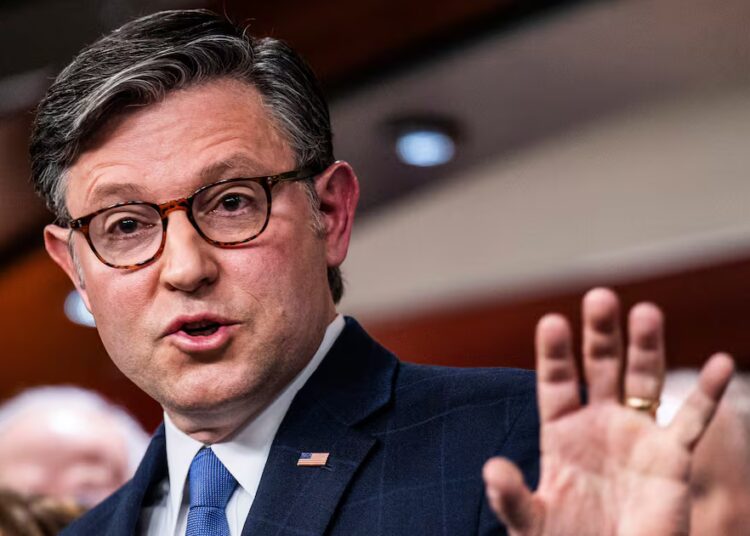Inside a crowded convention center in South Korea last month, Japan’s new prime minister, Sanae Takaichi, beamed as she met China’s leader, Xi Jinping, for the first time. Mr. Xi smiled back, a rare display of warmth between the rival countries.
Only a few weeks later, the relationship has come undone. Mr. Xi has unleashed a wave of reprisals against Japan over a recent comment by Ms. Takaichi about defending Taiwan, a self-governed democracy that Beijing considers part of its territory.
The dispute poses an early test for Ms. Takaichi, who took office late last month, the first woman to serve as prime minister in Japan’s history. As a lawmaker, she was a vocal critic of Mr. Xi, criticizing China’s militarization of the South China Sea and visiting Taiwan to show solidarity with its leaders.
Now, with the crisis threatening to overwhelm her nascent administration, Ms. Takaichi’s task, analysts say, is to avoid an escalation while still projecting strength at home.
“Nobody expected that her tenure would begin with a full-blown row with China,” said Mireya Solís, director of the Center for Asia Policy Studies at the Brookings Institution in Washington. “The challenge now is how to de-escalate without caving to China, or appearing to back down in a way that would weaken her domestically.”
The flare-up shows no signs of easing. The Chinese government has urged its citizens not to visit Japan, potentially sapping a major source of tourism, and Beijing signaled this week that it might move to restrict imports of Japanese seafood. China also dispatched Coast Guard ships to patrol near islands that both countries claim and warned Chinese students in Japan about what it said were risks to their safety.
More reprisals could still come; China has a record of economic coercion. During a dispute in 2010, China limited the export of critical minerals to Japan, including rare earth metals. Chinese state media urged boycotts of South Korean companies operating in mainland China in 2017 when punishing South Korea over its embrace of an American missile defense system.
“China has a playbook on how to apply pressure, and they’re going chapter by chapter,” Ms. Solís said. “The Chinese are not offering any off-ramp. The question is, what is the end game?”
The latest dispute began on Nov. 7, when Ms. Takaichi was fielding questions before the Diet, Japan’s Parliament. A lawmaker from a rival party asked her about potential “survival-threatening situations,” a classification that, under Japanese law, allows the deployment of the country’s military forces.
Ms. Takaichi said an attempt by China to blockade or seize Taiwan, which lies less than 70 miles from Japanese territory and sits astride shipping lanes vital for Japan’s economic survival, could qualify.
“If it involves the use of warships and the use of force, I believe that this could constitute an existential threat, no matter how you look at it,” she told Parliament.
Previous Japanese prime ministers, including Shinzo Abe, Ms. Takaichi’s political mentor, had avoided specifying how they would respond if China moved against Taiwan.
Ms. Takaichi later said her remarks did not constitute a change in policy. But her comments provoked a furious response in China, with officials demanding a retraction.
“Taiwan is China’s Taiwan,” Mao Ning, a spokeswoman for China’s foreign ministry, said at a news conference on Thursday. “Taiwan is none of Japan’s business.”
China and Japan have feuded for decades, largely because of the legacy of World War II, when the Japanese army committed atrocities, including the 1937 Nanjing Massacre, crimes for which Beijing believes Tokyo has never sufficiently apologized.
Even before Ms. Takaichi’s remarks on Taiwan, there were signs that Mr. Xi’s government was eager to increase pressure on Tokyo. China has been fanning anti-Japanese sentiment this fall as it commemorates the 80th anniversary of the end of World War II.
“China was primed to respond,” said Bonny Lin, the director of the China Power Project at the Center for Strategic and International Studies. “But I don’t think anyone quite predicted the extent of the escalation.”
When Ms. Takaichi met Mr. Xi in South Korea, for a summit of the Asia-Pacific Economic Cooperation, she raised issues including China’s movements in the South China Sea and human rights abuses.
Ms. Takaichi, who is grappling with a variety of domestic challenges, seems eager to let the dispute pass. She has ignored calls by some in her party to deport a Chinese diplomat stationed in Japan who recently issued a violent threat against her on social media. After the initial storm over her remarks, she told lawmakers she would refrain from “making explicit statements on specific scenarios.”
But it could be a long time before tensions calm. Ms. Takaichi’s party, the Liberal Democratic Party, lacks the back channels it once had to the Chinese government. The L.D.P. recently had a falling out with Komeito, its main coalition partner, which had served as a conduit to China.
“The Chinese are digging in, and Takaichi is unwilling to retract,” Ms. Lin said. “In the short term, there is no obvious way out.”
Hisako Ueno contributed reporting from Tokyo.
Javier C. Hernández is the Tokyo bureau chief for The Times, leading coverage of Japan and the region. He has reported from Asia for much of the past decade, previously serving as China correspondent in Beijing.
The post Japan’s Leader Gets Off to Rocky Start With China appeared first on New York Times.




